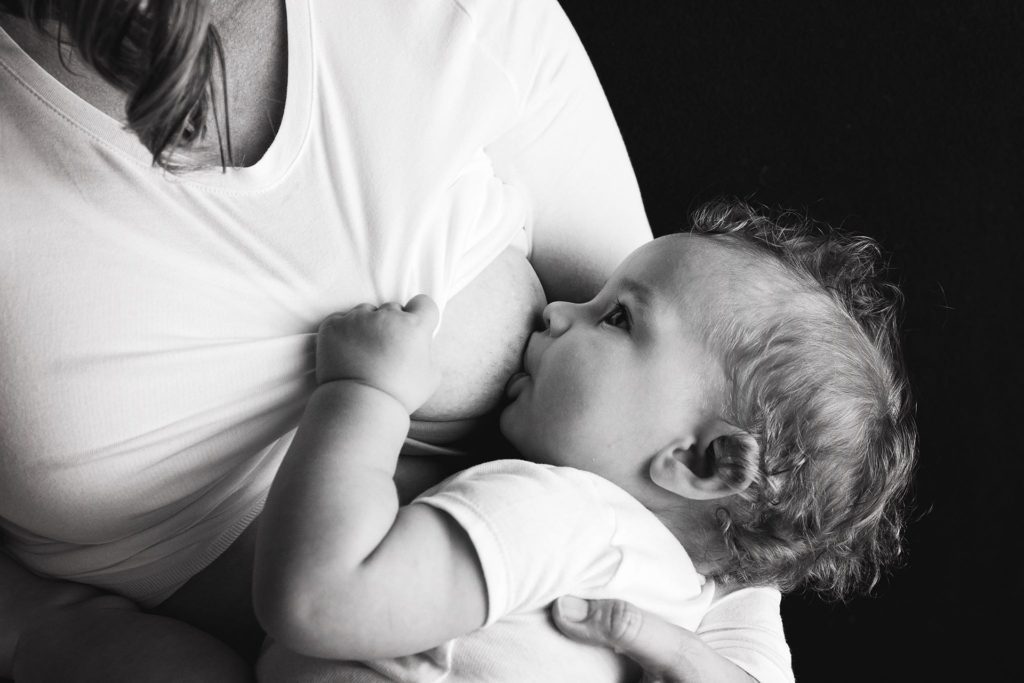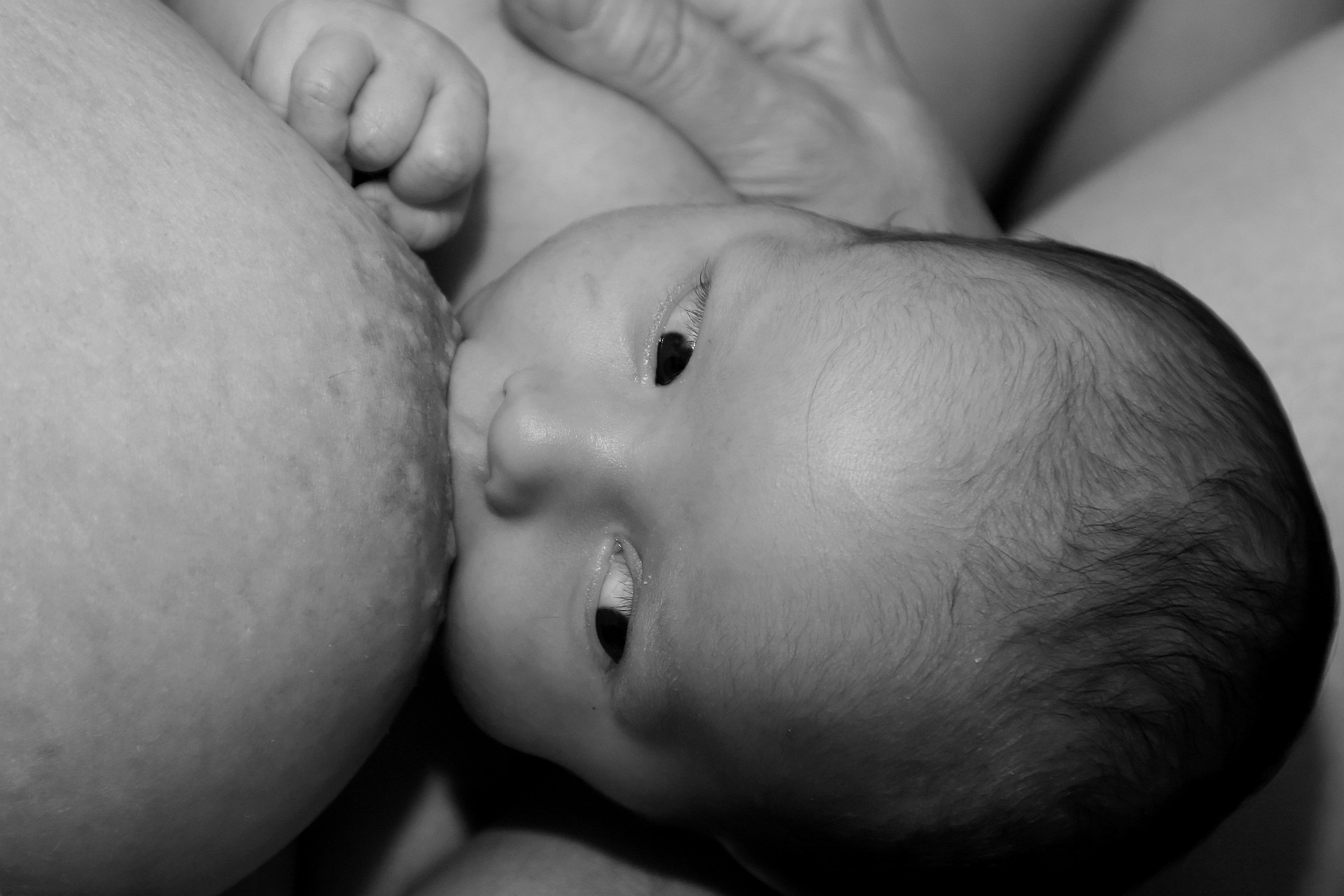Why does my baby latch and unlatch? This could be a problem you might be worrying about right now. During each feeding session, does your infant keep unlatching? Does she wiggle and act uncomfortable or fussy when you unlatch her? Does she pull away to gasp for oxygen while she gulps milk, or does she unlatch?
All of these signs are typical in infants who have difficulty latching. It may take some investigation to figure out why. It can be stressful and irritating when your infant keeps unlatching from the car seat or stroller. And it hurts your nipples, too! Try not to fret! This is a frequent problem, but there are ways to fix it so that you and your baby may enjoy the calm, healthy bonding experience you deserve while breastfeeding.

Why Does My Baby Latch And Unlatch?: 7 Common Reasons
Teething Baby
The pain and sensitivity of teething are well-known. Babies with gum pain may find it difficult to nurse.
Fast Letdown
When the milk comes out of the breasts quickly and strongly, this is called a fast letdown. Your infant may become overwhelmed by the sudden surge in milk supply and try to relieve himself by unlatching. Picture yourself at a fountain with water pouring directly into your mouth. A sense of being engulfed and pushed away would result.
There’s nothing you can do to prevent a quick decline in mood. An abundance of breast milk is a common trait among women. And the longer you go without nursing or pumping, the more milk you’ll have saved, which might have a dramatic effect.
Distractions
Around the 12-week mark, your child’s brain development accelerates, and he begins to show signs of awareness of his environment. Distractions like dad’s voice, the TV, or people walking by can trigger a baby to unlatch.
Babies will often utilize the breast as a pacifier substitute. And even if they’re not hungry, they may still want to nurse for companionship and stimulation. They quickly unlatch once the milk starts coming out.
Sick baby
Your infant will need to use his nose for breathing while nursing. Breastfeeding a congested baby might be difficult, leading to a shallow latch or constant unlatching.
Slow Flow
Infants that tend to unlatch may be experiencing inadequate milk supply or slow milk flow rather than a quick letdown.
Your baby may not be getting enough milk if you notice she is frustrated and tugs at your nipples after feedings or is hungry again soon after. Your baby will instinctively unlatch and retry for a deep latch if she is not getting enough milk.
Gassiness
Babies, especially newborns, often struggle with gas as their digestive systems learn to handle solid food for the first time. Your baby may be experiencing discomfort during nursing due to gas if they frequently unlatch to burp, fart, poop, or wiggle. If your baby is fussy during nursing, it may be because he or she is ingesting too much air.
Decreased Milk Production
If you find that you are producing insufficient breast milk, breast massage and regular nursing may assist. Another viable choice is to try a supplement, such as postnatal vitamins designed to increase milk supply. Before giving your child any medication or supplements, you should always check with a doctor or a lactation specialist.

How To Solve Common Latching And Unlatching Problems
For Teething Babies
As long as you don’t medicate, most teething discomfort will go away on its own after a few of days. If your baby is having severe teething pain that is keeping her from eating, you may want to ask your pediatrician if Children’s Tylenol is OK to give her.
For Fast Letdown
One option is to pump or manually express milk just before nursing your baby. This will allow the expression of the foremilk, which is not always as satiating or nutritious as the hindmilk that follows.
You can even nurse your kid while lying down on the couch with him or her on top of you. Your kid will feel more empowered during nursing sessions. The breast milk flow is also reversed, which prevents excessive dribbling. When you nurse your baby in a reclining position, the milk may overflow onto the floor or the sides of your baby’s mouth. It’ll let her relax a little bit and not feel like she has to gulp down everything at once.
For Distractions
If you can, try to find a peaceful place to nurse your baby. To help your infant stay attentive during feedings, try to keep to the same location each time. Babies who find that nursing calms them down may benefit from using a pacifier. There is always the option of switching things up and giving her something new to play with.
For Sick Babies
If you’re breastfeeding a baby who has a stuffy nose, you should do everything you can to keep her nose clear so she can breathe easily. Using saline drops in the nose multiple times daily is one solution. Before you nurse her, use a bulb suction device like a NoseFrida to empty her nose.
The use of a humidifier in the nursery can aid in the loosening of mucus and the facilitation of its expulsion. If she coughs up mucous while she’s eating, you should try feeding her while she’s sitting up or at an angle.
For Slow Flow
If your infant is having difficulty latching on one side, consider switching to the other. If she seems content when nursing on one side but then stops, try switching breasts to see if she settles on that one instead. If your baby is getting enough milk and has a healthy latch, you shouldn’t swap breasts till she tells you she’s finished with one.
Milk flow can be stimulated by compressing the upper breast. The optimal time to apply pressure is while the baby is sucking; when the infant is not sucking, avoid applying pressure.
For Gassiness
Burping frequently while nursing is also helpful for preventing the buildup of gas. Your infant may burp if he or she unlatches from the breast. If you swap sides and he’s still eating, repeat. You can try out a variety of burping postures, such as the ones below:
- One of the more common places for burping to occur is over one’s shoulder. It can be soothing to your infant if you touch and rub his or her back as you go around, bouncing lightly.
- Place the baby on your lap so that he or she is sitting straight and facing away from you. Put your infant in a reclining position and pat her back gently. Lean your hand over her chest so that you can keep her neck and head stable.
- Lay your baby’s tummy down across your lap, with her chin propped up but no pressure applied to her throat. Many infants find this to be the most comfortable posture because the slight pressure on their stomach allows them to shake out any excess air.
Push her knees into her chest and slowly rotate them clockwise to stimulate the natural flow and direction of the large intestine, among other gas-moving movements. Exercises like bicycle kicking and tummy time can aid with the gas release. If your infant still has gas, you could try gas drops or gripe water, both of which have helped many mothers.

Final Thoughts
It’s not uncommon for your baby to latch and unlatch frequently during nursing sessions. If you’re finding it difficult to manage, try some of the positions or tips mentioned above. You may also want to consult a lactation specialist for further help. I hope this article was of use to you. Thank you for reading!










